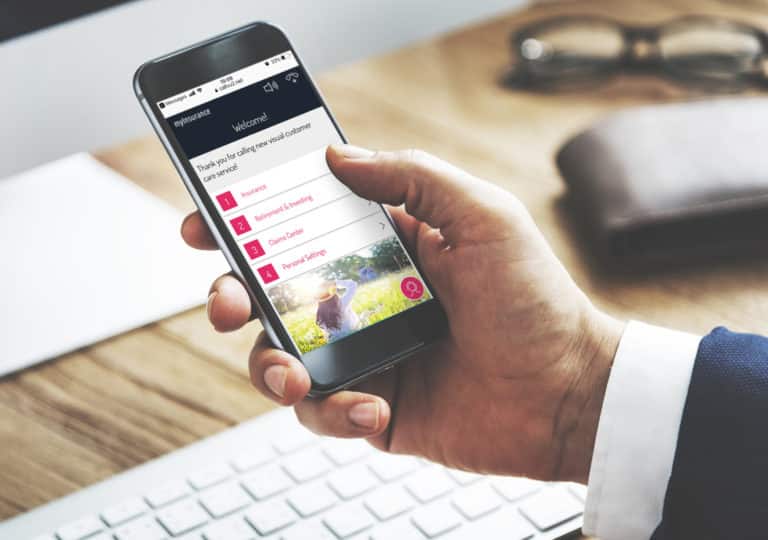For 2023, it seems that every large consumer-centric organization is talking about digital customer engagement. It’s a concept whose time has come. Digital media have provided great new opportunities to deliver customer experiences in ways that are more efficient, more accurate, and ultimately more satisfying to customers. By automating manual processes, digital customer engagement (dce) can transform the customer experience. Some of the most manual and expensive processes are in contact center interactions, so it makes sense to ensure that any digital automation you introduce into customer-facing processes can be seamlessly integrated into call center interaction flows.
Low-Value Tasks Create Resource Drain
Many contact center teams spend a significant amount of time fulfilling everyday tasks that customers are more than capable of addressing themselves. Some great examples are customer calls for balances and payments. Customer service agents add no value in these interactions other than finding and reciting the information to the customer — hardly an exchange worth the dollar-a-minute average for live calls. To improve efficiency and enhance customer satisfaction, many contact center leaders are anxious to drive more callers to self-service experiences that replace these low value-add live calls.
Digital customer engagement (DCE) technology is key to driving more self-service. Digital tech enables self-guided customer interactions and facilitates easy presentation of real-time data, enhancing the customer experience. But why don’t your callers choose to solve their problems in their customer behavior? The answer usually relates to one or more of three issues:
- There are no tools or workflows that empower them to solve their own problems
- They are unaware that they can access the information and tools themselves
- They find self-service cumbersome, and therefore, queries are easier to resolve by phone
Fortunately, many consumers are more than willing to fulfill their own needs without intervention. If you invest the time and resources necessary to address these issues via digital customer engagement (DCE.) The key here is meeting or exceeding their customer expectations so that digital customer experiences are satisfying parts of their customer journeys. Here is a description of the most popular digital experience automation technologies and how they work. From there, we’ll outline how you can implement the technologies you need, rapidly and with minimum effort, using a “No-code” CX Automation Platform.
Form Builders and Digital Customer Engagement (DCE)
Sometimes the key to driving more self-service is in making it easy to find the information needed. Many customer needs, like account balances, are quickly addressed if you use simple forms to speed customers to the correct data.
By implementing a CX Automation solution that does not require dev skills (i.e., “no-code”), CX and brand leaders can create mini-apps that answer common questions. A “no-code” form builder enables any user to drag and drop form elements so that they can create rich, on-brand experiences without long development cycles. That means digital customer engagement (DCE) can be executed quickly and easily.
The best form builders make it easy to create, update, and optimize forms so you can test and implement further improvements over time. Driving digital user engagement experience adoption often requires multiple tests and iterations to optimize the experience. As consumer needs change and evolve, your team can use the toolsets of a “no-code” CX automation platform to update the initial form design or workflow to drive even greater future adoption. Thus, continuous improvement can be at the center of your strategy.
No-Code Form Builders and Interoperability
Further, the best “No-Code” Platforms can create forms that function online, in apps, and call center workflows. This enables a truly omnichannel customer engagement strategy and infrastructure. That versatility helps drive greater consumer adoption and more accurate customer data collection. Interoperable digital customer experience also empowers simpler and more comprehensive customer behavior analytics, informing future optimization. It means that you can easily measure and compare metrics across digital channels. Additionally, many companies are now creating online portals that house their mini-apps on their websites. By making these app portals prominent on-site and in your app, you can boost awareness and drive broadscale adoption. They can also be a boon to your customer marketing strategy.
Another benefit here is the ability to deliver a more personalized experience, something that has been proven to enhance customer loyalty. By integrating your no-code forms with your existing information systems like your CRM platform, you can pre-populate forms with data and provide an even more vivid and convenient customer experience. Data integration can also empower enhanced functionality because of real-time access to information that can guide a more fruitful customer engagement.
Visual IVR and Digital Customer Engagement (DCE)
Visual IVR gives the customer the option of receiving a link to text-based workflows when they call you. The link is delivered to their cell phone. Many consumers prefer the speed and clarity of text-based forms to long audio trees. Instead of wading through seemingly endless options, they can quickly spot their needs and get to information faster.
Visual IVR is an outstanding way to divert calls while boosting consumer satisfaction. Further, by offering all mobile callers a visual IVR option, you can dramatically reduce the number of straightforward information requests.
Visual IVR also has benefits for conversational commerce because it can improve the efficiency and satisfaction of both telephonic and chat-based prospect interactions. That makes it a must-consider for digital marketing, especially for organizations selling high consideration products and services.
The best No-Code CX Automation Platforms make it straightforward to build a visual IVR experience using the same basic tools as other digital CX experience creation.
Digital Content Sharing and Digital Customer Engagement (DCE)
While content sharing doesn’t replace all calls, sharing things like disclosures and signature forms via cellphone links helps eliminate follow-up calls by completing more actions in the first interaction.
Many companies that used to deliver content via instant messaging, emails, and postal mail find that digital content sharing dramatically reduces speed to resolution and helps improve upselling and cross-selling initiatives. A well-crafted digital content sharing plan examines the most common workflows and looks for points where customers become frustrated and pick up the phone. From there, tasks are triaged and addressed sequentially.
It can also transform a prospect into a loyal customer by increasing the speed of the sale and ensuring the process takes just a single interaction. That’s why more and more leading brands are leveraging digital content sharing as part of their digital engagement strategy.
Making a Self-Service Support Plan
As you explore your options for digital customer engagement and automation across all your communication channels, it is tempting to select a single technology for immediate implementation. Indeed, a point solution technology can provide some benefits. But companies that take a more holistic and strategic approach can generate better results in both the short- and long terms.
Look for tech providers that offer multiple technologies, not just one type of solution. This gives you more options for process improvement and reduces security and other issues by delivering various technologies through a single set of integrations.
FICX and its “No-Code” CX Automation Platform are at the forefront of the digital CX movement. Our platform gives you access to multiple digital collaboration technologies from a single dashboard and workflow. Using FICX, you can implement the above technologies plus other game-changing capabilities like co-browsing, e-sign, and secure payments.
FICX and Digital Customer Engagement (DCE)
Some call center leaders and customer marketers worry that introducing self-service options will detract from consumer perceptions over time. But in most cases, that fear is unfounded. While the human touch is essential in some circumstances, few consumers prefer waiting for an agent when they can get the bits of information they need more quickly by themselves. With a versatile platform like FICX, you can build and implement digital solutions that drive self-service adoption and greater customer satisfaction. Visit the FICX website or request a demo now.





